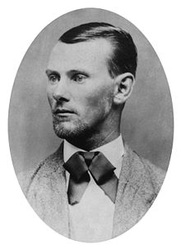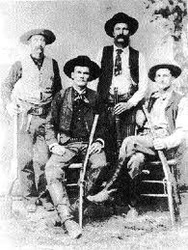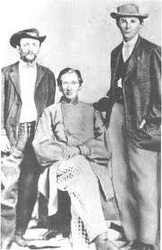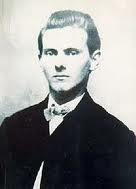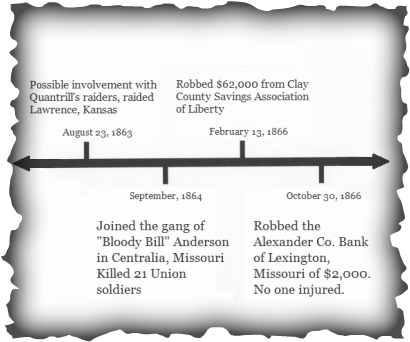Gangs & Guerrilla Warfare
In his teenage years, Jesse James joined Confederate guerrilla gangs during the Civil War. His experiences in the gangs strengthened his hatred of the Union and influenced his actions as an adult.
Various images of Jesse James, his gang, and his family during his days of guerrilla warfare
- Months after Union soldiers nearly killed Jesse’ stepfather, guerrilla-inspired violence erupted in divided states, such as Kansas, Missouri, and Nebraska
- When Kansas, Missouri, and Nebraska entered the Union as anti-slavery states Confederate supporters grew angry
- They protested against the anti-slavery stance, and many resorted to violence
- Guerrilla definition: a member of irregular armed forces fighting a stronger force by sabotage and harassment
Quantrill's Raid: August 1863
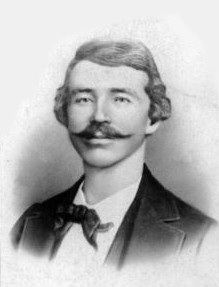
William Quantrill in his prime
- To take a stand, William Quantrill led over 400 Confederate supporters to Lawrence, Kansas
- Among these was Frank James, and accounts contradict to whether Jesse was present or not
- It is known that Jesse James was a messenger for the group
- Quantrill and his guerillas destroyed the town and massacred about 150 men and boys
- The raid was viewed as a great success for the Confederates
- Jesse James longed to be in the action like his brother, Frank, instead of just a messenger
Bloody Bill's Massacre: September 1864
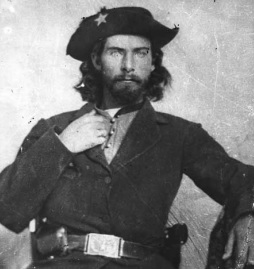
William Anderson, better known as "Bloody Bill"
- Jesse James joined "Bloody Bill" Anderson's guerrilla gang and rode with them in Centralia, Missouri
- He and his eighty men forced a train to stop
- They separated the Union soldiers from the civilians
- The soldiers were unarmed and defenseless
- The gang killed all but one soldier
- The incident was first documented in the Official Records of the Union and Confederate Armies as a telegraph from Brigateer General Clinton Fisk to General Douglass:
The Telegraph to General Douglass:
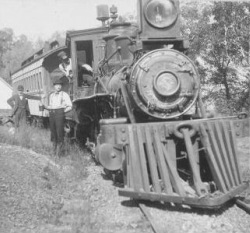
A train from the 1860s similar to the robbery
"GENERAL: Anderson and his friends captured the train from Saint Louis to-day at Centralia Station, killed 21 soldiers who were on the train, robbed the passengers, and burned the cars" (Official Records: Series 1, Vol 41, Part 3, page 423)
A later follow-up, sent at midnight the next day, provides more details:
"...my telegrams have advised you of the disasters at Centralia, the capture of the railway train, the inhuman slaughter of the defenseless soldiers thereon, the robbery of the passengers, the burning of the moving train, and the indignities visited upon helpless women must be regarded as one of the chief barbarisms of the war." (Official Records: Series 1, Vol 41, Part 3, page 453)
A later follow-up, sent at midnight the next day, provides more details:
"...my telegrams have advised you of the disasters at Centralia, the capture of the railway train, the inhuman slaughter of the defenseless soldiers thereon, the robbery of the passengers, the burning of the moving train, and the indignities visited upon helpless women must be regarded as one of the chief barbarisms of the war." (Official Records: Series 1, Vol 41, Part 3, page 453)
James's Major Gang Involvements: 1863-66 (During the Civil War)
Back to thesis
